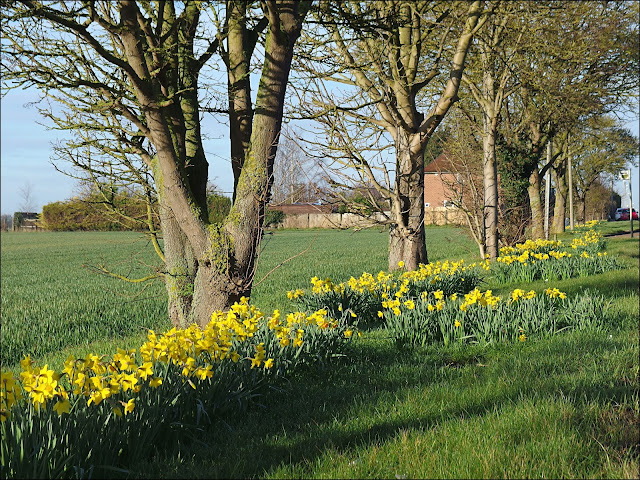No, not those erstwhile Merseyside mopheads but four rather special plants that are looking their best at the Botanic Gardens at the moment. As you may remember I invested in an annual subscription to the Cambridge University Botanic Gardens this year. Besides giving me free admission for the whole year I also receive a newsletter which keeps me abreast of what's flowering each month. Here are four of the best:
The Jade Vine (Strongylodon macrobotrys)
If you've been following this blog for a long time you may have seen this before as I wrote about it long ago having been directed to it by a six-year-old botanist who told me I ought to see it. "There's only four of them in the country, you know". Well, I do now.
The jade vine comes from the Phillipines where it is pollinated by a certain kind of bat which hangs upside-down to suck the nectar. As these bats have become scarce due to the destruction of their habitat so the Jade Vine has become an endangered species too. They really are that psychedelic colour and are apparently related to runner beans, something which you can appreciate if you look closely at the structure of the individual flowers.
You can find the Jade Vine in the hottest, most humid part of the glasshouses.
Rhododendron 'Cilpinense'
Outside, braving the cold wind and rain that English people ironically call "Spring", is this small fragile-looking Rhododendron. Rhododendrons don't normally do well in Cambridgeshire as the soils are all wrong being too alkaline, but here the soils have been treated so that heathers and rhododendrons can thrive.
Muehlenbeckia astonii
Some plants have names that are sheer poetry; Muehlenbeckia astonii is not one of them. Just to make matters worse it's also known as the Wiggy-Wig Bush, though the Maori people of its native New Zealand know it as Tororaro.
It's one of those rare plants that looks better before it gets its leaves or flowers and you can see the bewildering geometry of its tangled branches. It looks even finer on a day like today when misty drizzle has added myriad water droplets like tiny scattered jewels.
Although it's become rare according to the New Zealand Department of Conservation, it is an easy plant to encourage and grows well from cuttings or seed.
And finally,
Darwin's Orchid (Angraecum sesquipedale)
In amongst the rampant vegetation in the Rainforest part of the glasshouse range, standing meekly in a common plant-pot is a rather interesting plant that could be easily passed by. I passed by it last time I was here anyway and had to make a special return visit today.
In 1862 Charles Darwin was sent a number of orchids from Madagascar. In the time it took me to pass by and dismiss it as a plant of little consequence, Darwin realised that this was something special. What makes it unique is the long spur which hangs down from each flower. Yes, that rather nondescript green dangling thingy. Darwin discovered that in the end of this tube, which measures over a foot long (30 cm), is a small amount of nectar. Darwin postulated that there must be a moth with a proboscis of equal length in order to pollinate it. And he explained how the two organisms, the plant and the moth, must have evolved together. The only problem was that everyone thought that the idea of a moth with a tongue so long was absurd.
Twenty-one years after the death of the great naturalist just such a moth was discovered in the jungles of Madagascar.
And besides this quartet of splendid plants there are just some parts of the garden which look splendid, even on a grey drizzly day...
Every once in a while we like to introduce you to useful words that lie in neglected corners of the dictionary. You may have noticed that the Latin name for Mr Darwin's orchid is Angraecum sesquipedale, the last part of which means "a foot-and-a-half long", a slightly exaggerated reference to the spur which makes it unique. It's therefore closely related to the word sesquipedalianism, which literally means using words which are a foot-and-a-half long. In other words using lots of unnecessarily long words. Words like sesquipedalianism, for example.
Take care.


















































